 The Ultra-Drain Guard is engineered to filter stormwater waste before it becomes a problem in the water system. As a storm drain filter, it removes contaminants like litter, sand, and oil from stormwater flow. Its geotextile fabric and easy installation make it ideal for industrial facilities, construction sites, and parking lots where stormwater runoff is likely to carry oil, eroded soil, debris, and fuel contaminants from cars.
The Ultra-Drain Guard is engineered to filter stormwater waste before it becomes a problem in the water system. As a storm drain filter, it removes contaminants like litter, sand, and oil from stormwater flow. Its geotextile fabric and easy installation make it ideal for industrial facilities, construction sites, and parking lots where stormwater runoff is likely to carry oil, eroded soil, debris, and fuel contaminants from cars.
Compliance: Exceeds 80% sediment removal efficiency. Helps comply with NPDES, 40 CFR 122.26 (1999) when used as Best Management Practice in Stormwater Pollution Prevention Plans.
Installation: Easily installed in most drains. Simply raise the grate, place the Ultra-Drain Guard over the opening, and carefully lower the grate back in place, then pinch the fabric in place to keep it secure.
The Ultra-Drain Guard has several models:
Oil & Sediment Model: Removes up to .87 gallons of hydrocarbons as well as dirt, sand, and other contaminants.
Oil & Sediment Plus Model: The addition of a filter strips increases oil and grease absorption by .51 gallons, offering a total capacity of 1.38 gallons of hydrocarbon removal.
Trash & Debris Model: Designed specifically to catch larger items and floatables like leaves, cigarette butts, and paper goods. More recently used for capturing plastic pellets in support of programs like Operation Clean Sweep.
Additional Information
- When new, the Ultra-Drain Guard has a flow rate of 90 gpm/ft2. However, the unit has been designed with overflow ports. These allow the Ultra-Drain Guard a flow rate of 770 gpm which will prevent any flooding or ponding during extreme rain events. Any water that goes through the overflow is essentially untreated.
- The amount of rainfall and the amount and type of pollutants that the unit will be exposed to, among other things will determine the Ultra-Drain Guard’s life expectancy. For this reason, we recommend inspecting the unit after each significant rain event to better understand how much each Ultra-Drain Guard will capture. We have had test units in Seattle as well as Florida that were still working effectively after more than a year after installation.
- This product can be reused under most circumstances. If the Ultra-Drain Guard is filled with sand, silt, and sediment, it can be removed from the drain, emptied out and replaced. Trash and debris can also be removed. The exception is if the Ultra-Drain Guard is saturated with oil, gas or other hydrocarbons and because these pollutants can be flushed out of the Ultra-Drain Guard by a major rain event, it is recommended that the units be replaced instead of reused.
- Usually, the most difficult part of installing an Ultra-Drain Guard is the handling of the catch basin’s grating. Depending on the area, these grates can be large and heavy and therefore a challenge to lift/move. For that reason, a second set of hands is recommended. The rest of the installation is quick and easy.
- The sewn in straps are used when removing a full Ultra-Drain Guard from the catch basin. BEFORE lifting the grate, the four straps should be “fished out” and brought up through the drain’s grating. A piece of rebar, steel rod or a shovel or broom handle can then be inserted through each set of straps. When the grating is lifted, the Ultra-Drain Guard will be lifted with it instead of dropping into the catch basin.
- Any excess material that is leftover after the grate has been put in place can be trimmed but it is certainly not required. In fact, there are a couple of reasons that leaving the extra material is beneficial. It can act as a “pre-filter” and remove some pollutants from the stormwater before they have a chance to get below the grate and into the Ultra-Drain Guard. Also, if there is a possibility that the Ultra-Drain Guard will be reused in the future, the excess material will make it much easier to be reinstalled. If trimming of the material is necessary/desired, this can be easily done with heavy-duty scissors or a utility knife.
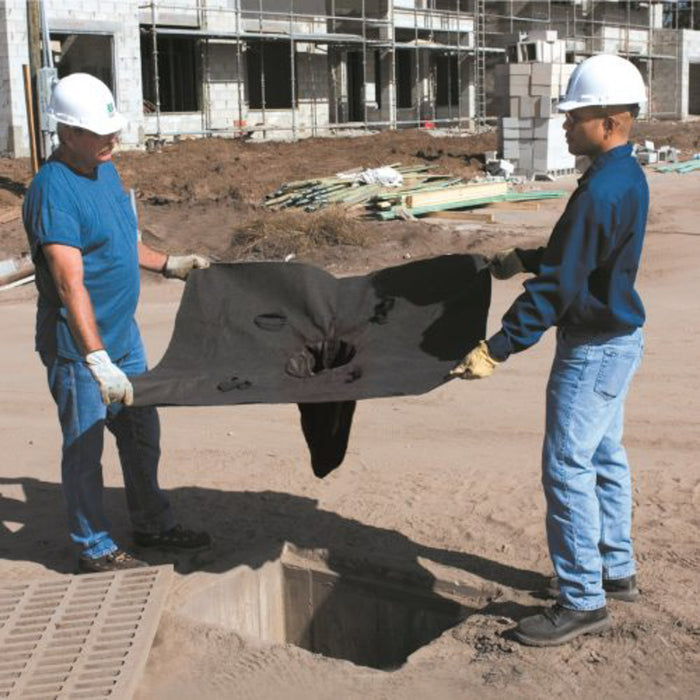

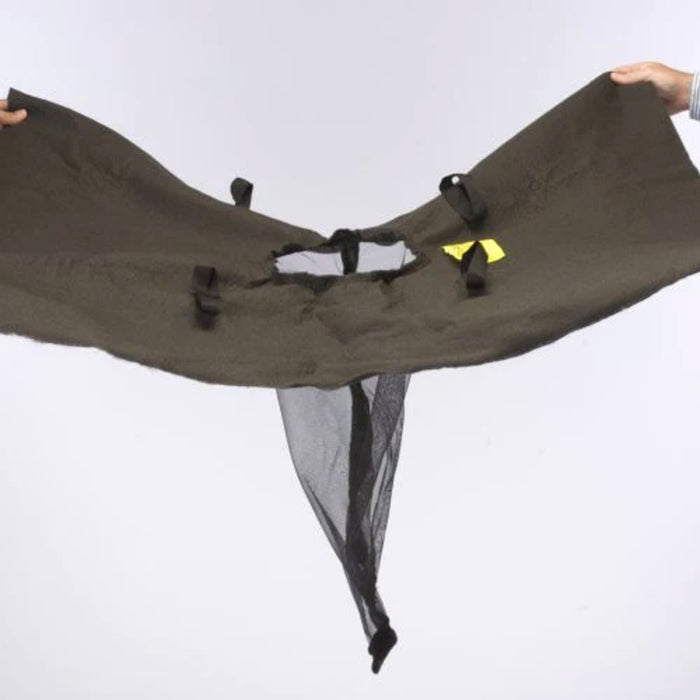
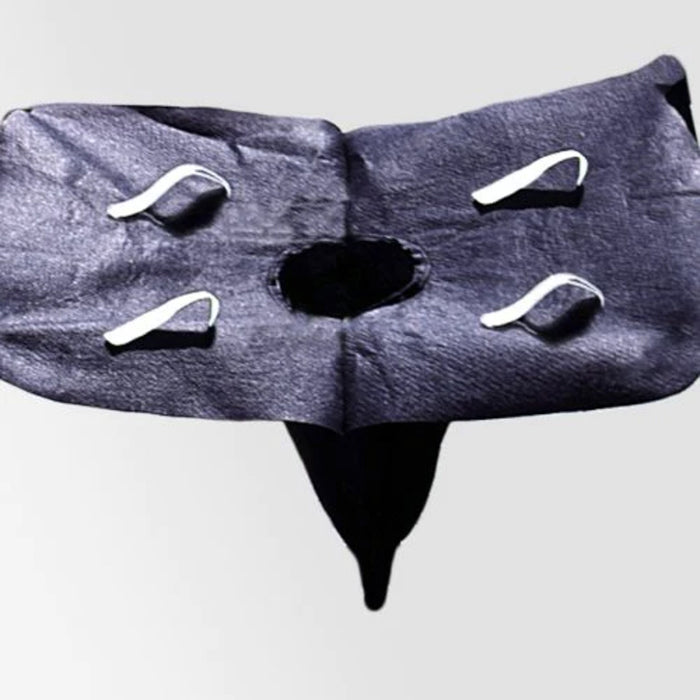
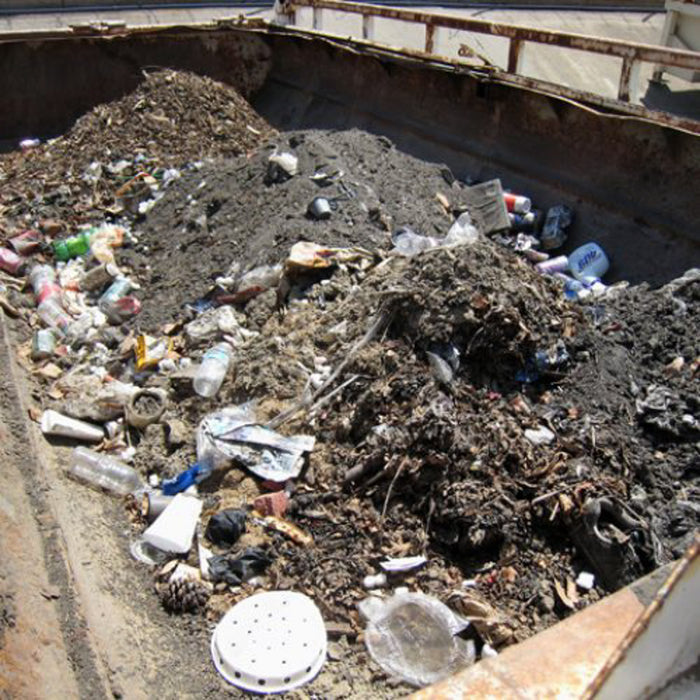
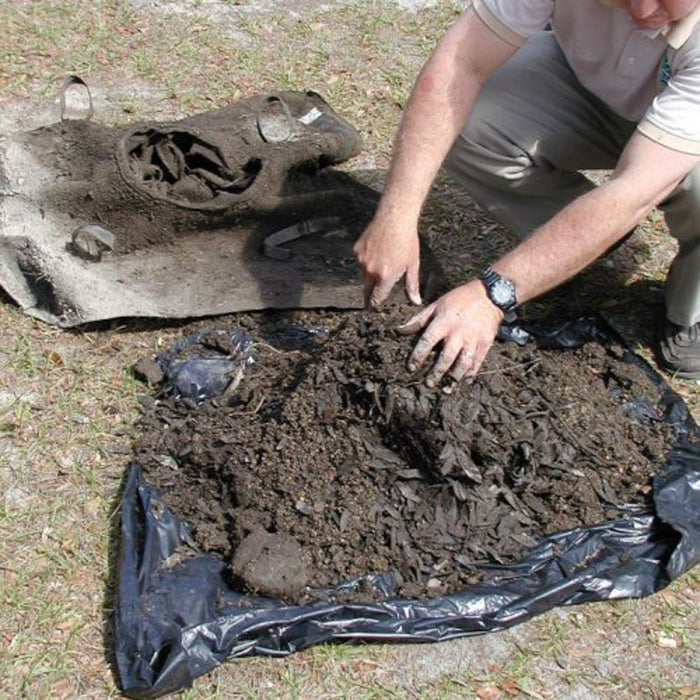
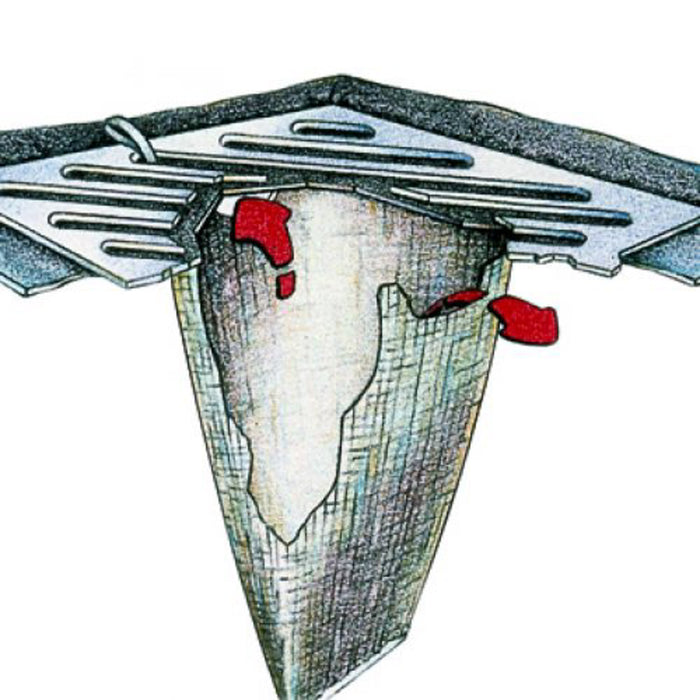

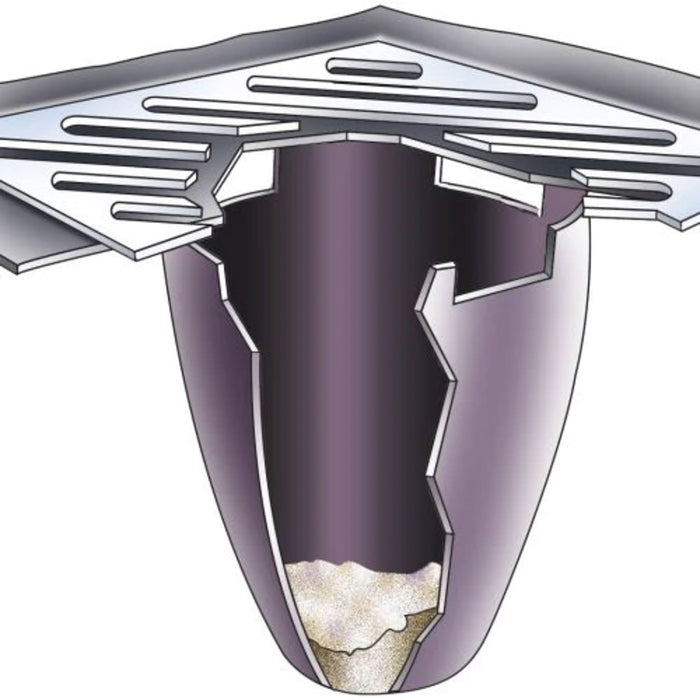
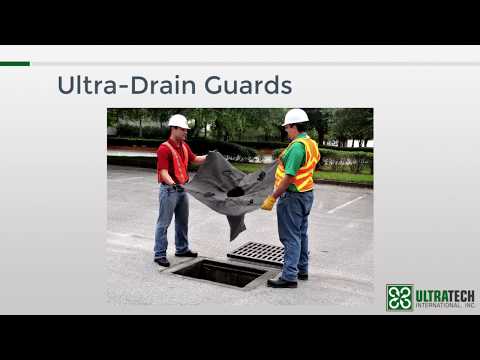
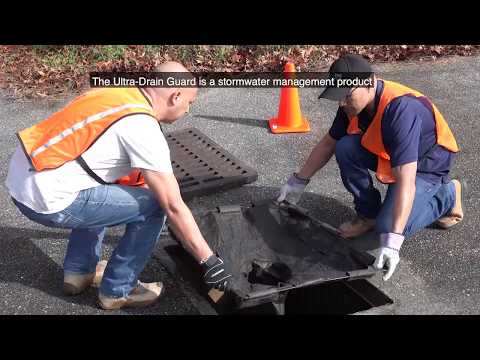
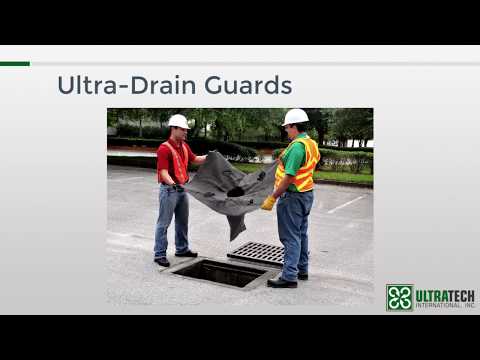
 The Ultra-Drain Guard is engineered to filter stormwater waste before it becomes a problem in the water system. As a storm drain filter, it removes contaminants like litter, sand, and oil from stormwater flow. Its geotextile fabric and easy installation make it ideal for industrial facilities, construction sites, and parking lots where stormwater runoff is likely to carry oil, eroded soil, debris, and fuel contaminants from cars.
The Ultra-Drain Guard is engineered to filter stormwater waste before it becomes a problem in the water system. As a storm drain filter, it removes contaminants like litter, sand, and oil from stormwater flow. Its geotextile fabric and easy installation make it ideal for industrial facilities, construction sites, and parking lots where stormwater runoff is likely to carry oil, eroded soil, debris, and fuel contaminants from cars.